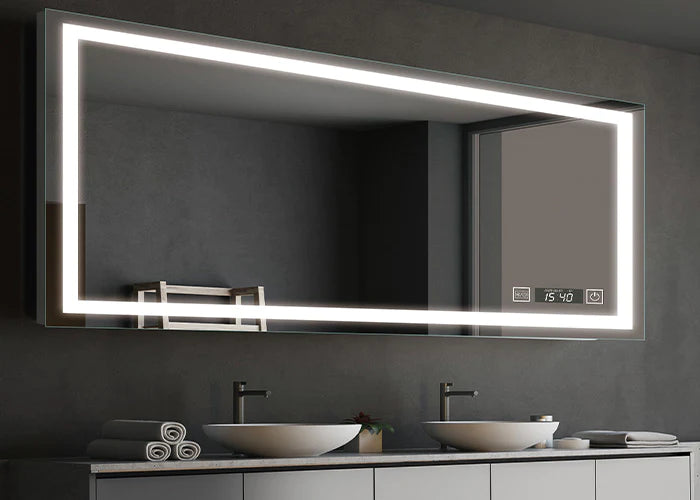If you're planning a remodel or new build, it's not just about finding the right materials and making sure the contractor does their job—it's also about making your new home as sustainable as possible.
Sustainable homes are good for the environment, but they're also good for your wallet. By choosing materials that are less expensive over time and using energy-efficient appliances and lighting fixtures, you can save money on utility bills while making sure your home is environmentally friendly.
It might seem like those goals are at odds with each other, but they don't have to be! There are many ways to make your remodel or new build more sustainable and still make it look great. Here are a few tips for making your remodel or new build more sustainable:
1. Make use of natural light and ventilation in your home

Natural light and ventilation are two of the most important things you can do to make your home more sustainable, especially when you're remodeling or building a new home.
Natural light is important because it increases your ability to see clearly, which reduces eye strain and helps you avoid headaches. Natural light also helps reduce feelings of depression by helping you sleep better. Finally, natural lighting makes it easier to monitor your electricity consumption so that you don't end up paying more than necessary on your electric bill.
Ventilation is important because it allows fresh air into your home, which improves the quality of air in the house as well as reduces odors caused by cooking or cleaning products. Ventilation also helps keep mold growth at bay and keeps moisture levels in check so that drywall doesn't crack from excessive humidity levels within a house's walls and ceilings (which can lead to mold growth).
If you look at the benefits of having a well-ventilated home, it's clear that ventilation is an essential component of quality indoor air. It improves health and reduces energy costs while also preventing mold growth and keeping your house looking great on the outside.
2. Reduce waste
It's easy to get caught up in all the bells and whistles when starting a renovation—but don't forget about sustainability! One of the easiest ways to reduce waste is by using recycled materials when building or renovating your home.
If you're building a new house or renovating an existing one, there are so many options for making it more environmentally friendly. You can use reclaimed wood or metal siding or even old windows as accents in your home. This not only reduces waste but is also a great way to add character and personality to your space.
3. Choose sustainable materials
When it comes to sustainable building materials, the first place to start is with the obvious. Recycling is a great way to reduce waste during construction or renovation projects, but there are other ways to go green as well.
For instance, choosing sustainable options for common building materials like wood flooring or cabinets made from MDF (medium-density fiberboard) can also help reduce your carbon footprint. And if you're looking for a more eco-friendly way to heat or cool your home, solar panels might be the right fit for you.
There are lots of ways to make your home more environmentally friendly—and they don't have to break the bank!
4. Use energy-efficient appliances and fixtures

You may think you're saving money on your energy bill, but if you're using appliances that are old and inefficient, you're actually paying more than you should be.
One way you can save money on energy bills while also reducing greenhouse gas emissions is by switching out old appliances for newer models with high energy ratings (or “H E” ratings). You can also reduce energy use by installing energy-efficient lighting fixtures in your home and making sure that your appliances are running at peak performance.
5. Look Beyond the Price
When it comes to building a new home, you may be tempted to cut corners and save money by using cheaper materials or installing energy-inefficient appliances. But this strategy will end up costing you more in the long run, both in terms of your monthly utility bills and your carbon footprint. Instead, try making smart choices that will help reduce greenhouse gas emissions and lower your long-term costs—both financial and environmental.
While it's good to look at the price tag when choosing your home's features, don't forget about the long term. While some features are more expensive up front, they may save you money over time by increasing the energy efficiency of the home or reducing your energy bills. For example, installing solar panels will cost more than conventional electricity at first but may pay for themselves within a few years and then continue saving you money for decades.
6. Pick the Right Architect or Building Designer
For the most part, architects and builders can't control the material choices that go into their projects. But they do have a big say in how a home is designed, which appliances are installed, and where you put your solar panels. When shopping for an architect or builder, look for someone who has experience building green homes—these professionals will know what materials to use and how to maximize efficiency with minimal impact on your budget.
Conclusion
So there you have it: a few easy ways to make your remodel or new build more sustainable. We're sure that you'll find this information helpful as you move forward with your project, and we hope that it inspires you to think about sustainability in a new way.
This article is just a starting point for how to make your home more sustainable. In fact, it's not even close to being the end of the conversation. There are so many ways that you can take this information and run with it—and we encourage you to do just that!
So let's get started. Let's start by setting goals for ourselves. What do you want from your remodel or new build? Do you want to save money? Do you want a nicer home? Do you want to be able to live off-grid?
Once you have your goals in mind, start thinking about how best to achieve them. For example, if one of your goals is saving money on energy use, then maybe it would be worth looking into solar panels or installing LED lights in all your rooms (or both!). Or if one of your goals is making sure that everyone in your home feels comfortable no matter what time of year it is, then maybe it would be worth looking into radiant floor heating systems or double-glazed windows (or both!).
The possibilities are endless—and so are the benefits!





